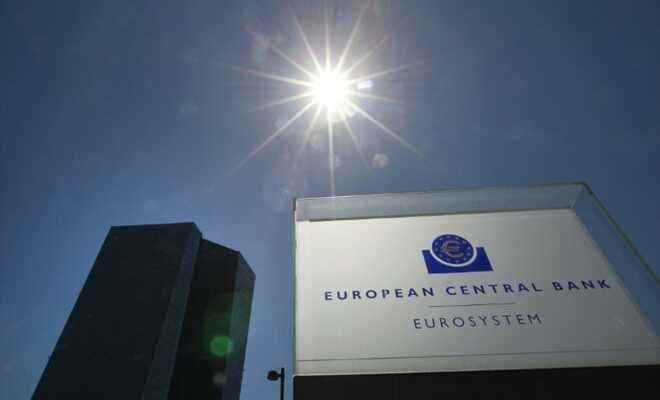Italian Prime Minister Mario Draghi after a G7 summit at Elmau Castle in Germany, June 28, 2022 (AFP/Archives/Tobias Schwarz)
A taste of deja vu in Italy, borrowing rates are again scrutinized with anxiety by financial and political circles. The shock announcement of Mario Draghi’s resignation, combined with the ECB’s rate hike, rekindled fears of a debt crisis.
When the ECB signaled the end of its monetary support to the economy in mid-June, the spread, the closely watched difference between German and Italian ten-year interest rates, jumped to 245 points, the highest for two years.
Then, the prospect of a future instrument from the ECB aimed at curbing the rise in spreads brought down this gap, which widened again on Thursday with the government crisis.
– Peril in the house?
Beyond the political tensions, “there is a specific Italian risk, due to the scale of the debt, the low growth rate and the heavy dependence on Russian gas”, summarizes for AFP Gilles Moëc, chief economist of the Axa group.
Italy is crumbling under a debt of more than 2,700 billion euros, or some 150% of GDP, the highest ratio in the euro zone behind Greece, but which has now begun to decline.
The peninsula has long lagged behind in the eurozone: between 1999 and 2019, its GDP grew by only 7.9%, compared to 30.2%, 32.4% and 43.6% respectively in Germany, France and Spain.
Its growth reached 6.6% in 2021, after a historic recession in 2020 due to the pandemic. The Bank of Italy is counting on a 3.2% increase in GDP for 2022, however reduced to below 1% in the event of a stoppage of Russian gas deliveries.
– Political crisis
To stimulate its growth, Italy is counting on the windfall of the European recovery plan, ie 191.5 billion euros. But the disbursement of the funds is linked to a series of reforms, which seem to be compromised in the event of the departure of Prime Minister Mario Draghi.

A car carrying Italian Prime Minister Mario Draghi arrives at the Quirinal Palace in Rome on July 14, 2022 (AFP/Andreas SOLARO)
The ten-year borrowing rate, now at 3.4%, fell below 0.50% shortly after the country took control in February 2021 of “Super Mario”. He will announce to the country on Wednesday whether his resignation is irrevocable.
“If the Draghi government falls tomorrow, I dare not imagine what will happen with the spread,” says Franco Pavoncello, professor of political science at John Cabot University in Rome.
In the event of early elections, the return to power of the populist right, leading the polls, could weigh on the spread, as was the case in 2018, after the arrival of a coalition between the League (extreme right ) and the M5S (antisystem).
– The ECB to the rescue
For Gilles Moëc, “it was the pressure on Italy that convinced the ECB to put in place” a system aimed at avoiding the slippage of the spreads of the most fragile countries.
Its objective is to counter speculation and prevent the return of the debt crisis that shook the euro zone in 2012.

The headquarters of the European Central Bank in Frankfurt, Germany, June 15, 2022 (AFP/Archives/Daniel ROLAND)
But should it cover the political risk? The so-called “frugal” countries of northern Europe (Germany, Denmark, the Netherlands, etc.) would take a dim view of ECB support for a Eurosceptic government.
According to Erik Nielsen, chief economist at UniCredit, the sharp rise in rates in June is pure speculation, “without reflecting a real problem of insolvency”.
“Italy is seen as the most vulnerable country, so it’s the one we’re speculating against.”
– Back to the crisis of 2012?
Will rising interest rates derail public finances? “No, because interest rates would have to rise very sharply and sustainably for us to start seeing solvency problems,” Jesus Castillo, an economist at Natixis, told AFP.
Especially since Italy’s bonds have an average duration of more than seven years, which means that the rise in rates will take time before it affects the cost of debt.
“Economic fundamentals remain compatible with long-term debt sustainability,” Castillo said. And the banks are in better shape than in 2012.
© 2022 AFP
Did you like this article ? Share it with your friends with the buttons below.




